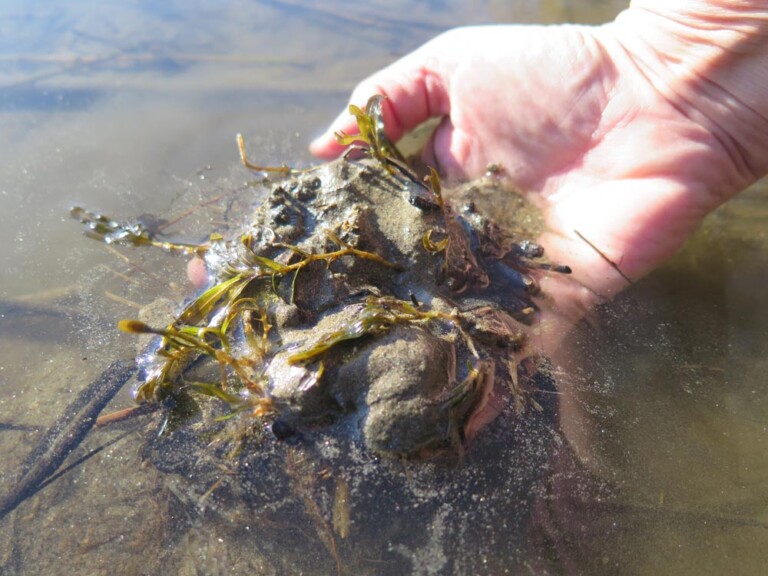Are there aquatic invasive plants living at the north end of Hayden Lake? Late fall seems like an odd time of year to be looking for invasive plants, but the students’ investigation stirred up some challenging results.
What’s Invasive?
Students were quick to say that an invasive plant is not native! Some were eager to point out that not all non-native plants are bad. This assertion is true! Many of our cultivated food crops are not native, and unless they inadvertently and naturally seed neighboring fields, they are not invasive. The conclusion: invasive plants are not native to the place in which they are growing, AND they take over the local ecosystem, reducing diversity and causing economic harm or property damage.
 How Will You Know When You’ve Seen One?
How Will You Know When You’ve Seen One?
The students couldn’t inspect the lake directly, so the Improvement District brought samples collected the day before. With Invasive Species Cards and hand lenses to help with identification, students examined water and plant samples, looking closely at the structure of the plants and their behavior in and out of the water.
Were Invasive Species Among the Samples?
Almost every sample included plants with ½-inch wide, wavy leaves, many of them on stems sprouting from tiny pinecone nuggets called turions – invasive Curly-leaf Pondweed. A few plant-stems displayed nodules every half-inch or so with four feathery leaves growing out of each. Some, when held up in the air, were difficult to inspect because their leaves fell limp and clinging to the stem – invasive Eurasian Watermilfoil. Others stood open and rigid as if they were still in the water – hybrid or native Watermilfoil.
Remember that these samples came straight from the lake into the classroom. The conclusion was, yes. There are aquatic invasive plants currently growing – even in the cold – at the north end of Hayden Lake!
 What’s a Person to Do?
What’s a Person to Do?
Clean, Drain, Dry! And Watch Your Wake! These two public education campaigns form the first and best line of defense. Clean and drain your boat when exiting any waterway to prevent transporting invasive species from one body of water to another. And when on the water, avoid motoring through weed beds and keep your wake low enough to prevent stirring up the bottom sediments or eroding the shoreline and thus releasing more plant-feeding nutrients into the water.
It’s late fall and moving into winter now. Tuck these bits of wisdom away for now. They’ll come in handy later. Because, while we snuggle in for the winter, the Curly-leaf is growing. It’ll be there to greet us in the spring.




One Response
We need more 5th graders!
Comments are closed.